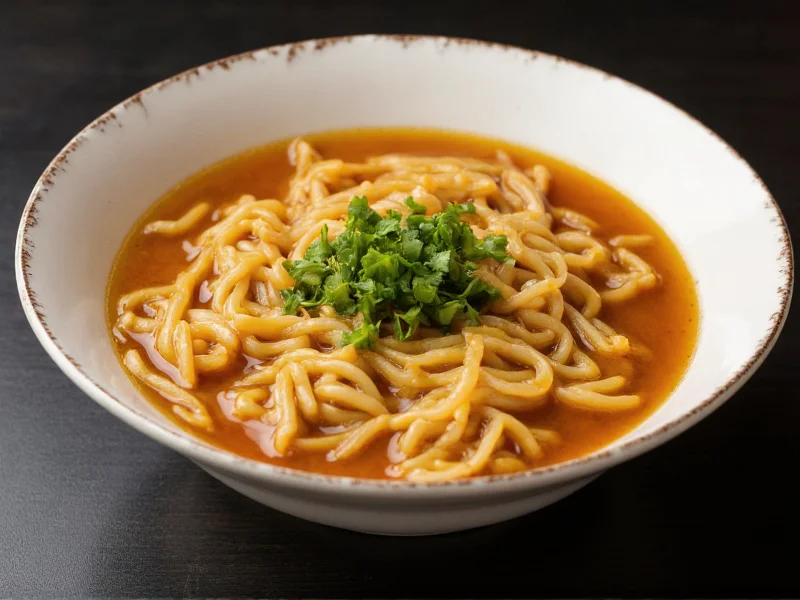Understanding Soup Noodles: More Than Just Pasta in Broth
When properly selected and prepared, soup noodles transform broth-based dishes from simple liquids into satisfying meals. The right noodle variety enhances texture, carries flavors, and provides the essential heartiness that defines exceptional soup experiences across culinary traditions worldwide.
The Science Behind Soup-Suitable Noodles
Soup noodles differ from regular pasta through specific formulation and processing techniques. Wheat-based varieties often contain higher protein content (12-14%) which creates stronger gluten networks. Rice and starch-based noodles utilize amylose content that resists over-hydration. These structural properties prevent the rapid breakdown that occurs when standard pasta meets hot broth.
Major Categories of Soup Noodles
Soup noodles fall into three primary categories based on their composition, each serving distinct culinary purposes and regional specialties. Understanding these categories helps home cooks and professional chefs select the ideal noodle for specific broth types and flavor profiles.
| Noodle Category | Primary Ingredients | Texture Profile | Ideal Broth Pairings | Cooking Time |
|---|---|---|---|---|
| Wheat Noodles | Wheat flour, water, salt, sometimes egg | Firm, slightly chewy | Rich meat broths, miso, tomato-based | 3-8 minutes |
| Rice Noodles | Rice flour, water | Smooth, delicate | Light broths, coconut-based, clear Asian soups | 2-5 minutes |
| Starch Noodles | Mung bean, potato, or sweet potato starch | Translucent, slippery | Hot and sour soups, Korean army stew | 1-3 minutes |
Regional Varieties and Their Culinary Applications
Asian cuisine features the most diverse soup noodle traditions, each developed to complement specific regional broths and flavor profiles. Japanese ramen noodles use kansui (alkaline water) which creates their distinctive yellow hue and firm texture that stands up to rich pork broths. Vietnamese pho employs flat rice noodles that absorb delicate beef broth without overpowering its subtle flavors.
European traditions feature their own soup noodle specialties. Italian pastina (tiny pasta shapes) and German spaetzle provide comforting heartiness to chicken soups and broths. These wheat-based varieties release starch gradually, naturally thickening the broth while maintaining distinct texture.
Perfecting Soup Noodle Preparation
Proper cooking technique significantly impacts final texture. For dried noodles, always bring broth to a rolling boil before adding noodles. Fresh noodles require gentler treatment—simmering rather than boiling prevents disintegration. The critical step many home cooks miss: undercooking noodles by 1-2 minutes before adding to soup allows them to finish cooking in the broth, absorbing flavors while reaching ideal texture.
For best results with soup noodles, follow these professional techniques:
- Season cooking liquid generously with salt (at least 1 tablespoon per quart)
- Stir immediately after adding noodles to prevent clumping
- Test texture one minute before package directions suggest
- Reserve 1 cup of cooking liquid before draining for broth adjustment
- Shock wheat noodles in cold water only if serving cold; for hot soup, transfer directly to broth
Gluten-Free Soup Noodle Options
Modern gluten-free soup noodles have improved dramatically through advanced starch combinations. Look for products blending rice flour with tapioca and potato starches in precise ratios that mimic traditional wheat noodle behavior. These varieties maintain integrity in broth for 20-30 minutes—sufficient for most soup service. For homemade gluten-free soup noodles, incorporate xanthan gum (¼ teaspoon per cup of flour) to improve elasticity and prevent disintegration.
Avoiding Common Soup Noodle Mistakes
Even experienced cooks make critical errors with soup noodles. Adding noodles too early causes mushiness as they continue cooking in hot broth. Using insufficiently salted water produces bland noodles that can't stand up to flavorful broths. Overlooking regional pairings—like using thick udon in delicate consommé—creates textural imbalances that ruin the dining experience.
Professional chefs recommend cooking noodles separately and adding them to individual bowls just before serving. This technique, while requiring extra steps, guarantees perfect texture regardless of how long the soup sits before consumption—a crucial consideration for both home cooking and restaurant service.
Storage and Shelf Life Considerations
Dried soup noodles maintain quality for 1-2 years when stored in airtight containers away from moisture. Fresh noodles last 3-5 days refrigerated or up to 2 months frozen. Cooked noodles keep best when stored separately from broth—submersion in liquid accelerates breakdown. For meal prep, cook noodles to just shy of al dente, cool rapidly, toss with minimal oil, and refrigerate for up to 3 days.











 浙公网安备
33010002000092号
浙公网安备
33010002000092号 浙B2-20120091-4
浙B2-20120091-4